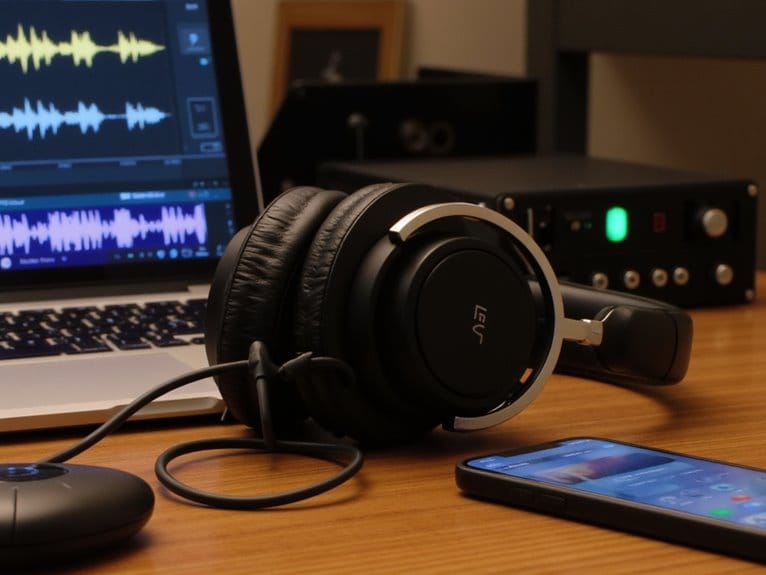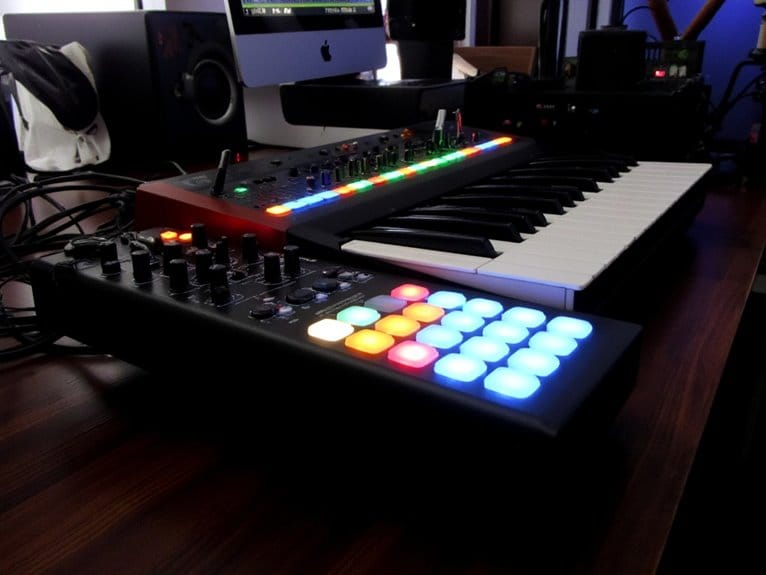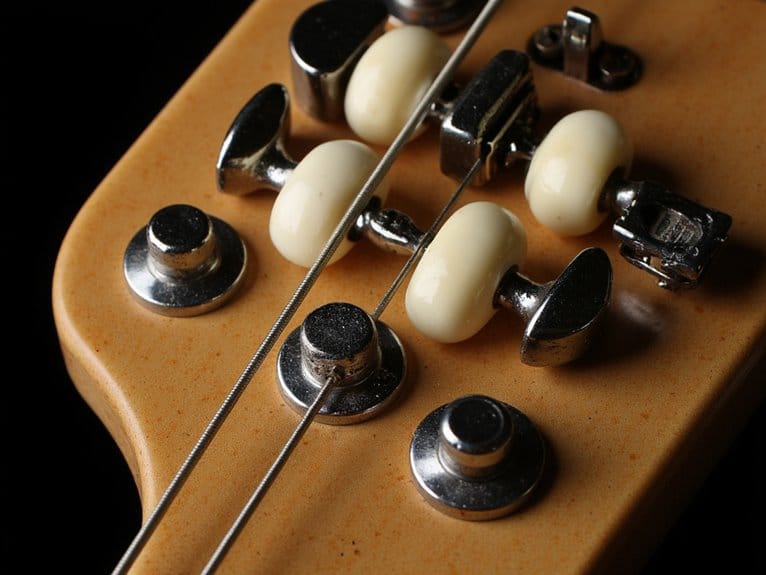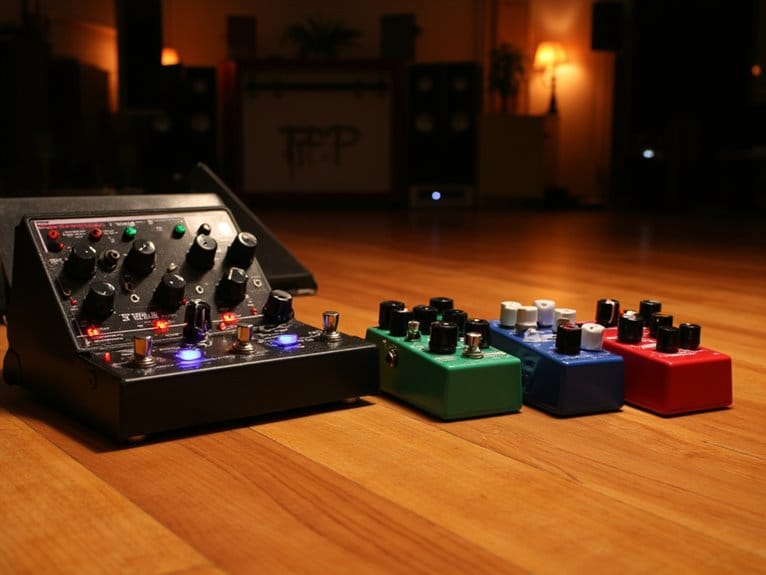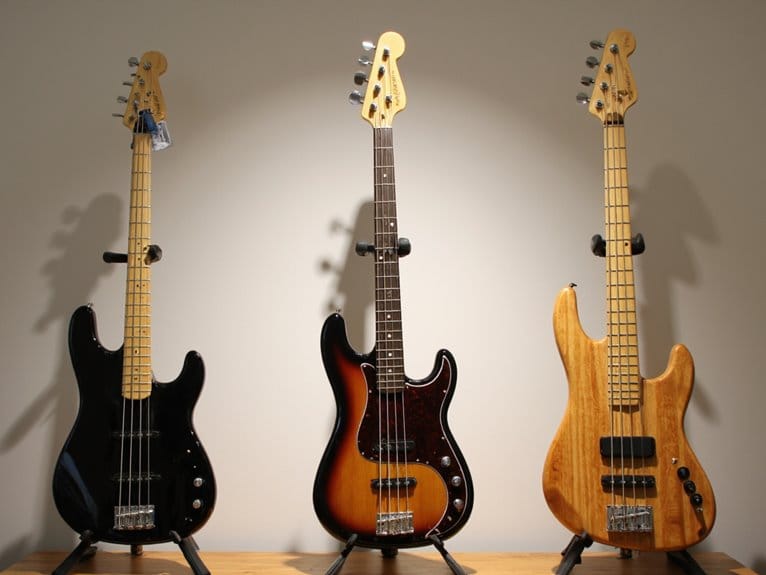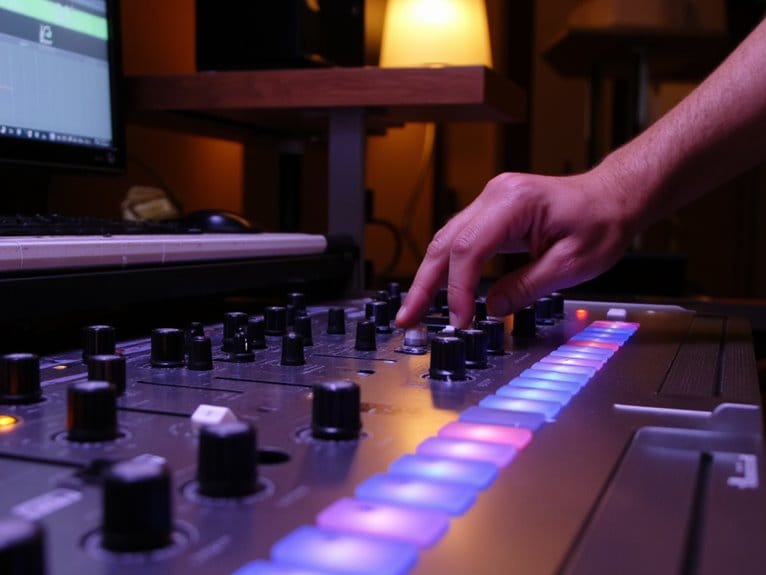How to Break in New Headphones
You’ll want to break in your new headphones by playing pink noise, white noise, or varied music content for 40-50 hours at moderate volume levels around 50-60% capacity. This process mechanically loosens the driver components-whether they’re dynamic, planar magnetic, or balanced armature designs-allowing the voice coils, diaphragms, and suspension systems to reach their intended performance characteristics. Keep your headphones fully charged, loop your audio content continuously, and resist adjusting volume during this conditioning period to achieve ideal sound signature development that proper measurement techniques can reveal.
We are supported by our audience. When you purchase through links on our site, we may earn an affiliate commission, at no extra cost for you. Learn more.
Notable Insights
- Play pink noise or varied frequency content continuously for 40-50 hours at moderate volume levels.
- Start at 50-60% volume capacity and gradually increase over several days to prevent driver damage.
- Use white noise, sine wave sweeps, and instrumental music to promote uniform mechanical component loosening.
- Monitor for distortion or unusual sounds during break-in sessions to assess headphone condition regularly.
- Conduct critical listening tests after 40+ hours to identify improvements in sound signature and quality.
Understanding the Science Behind Headphone Drivers
When I first started exploring headphones seriously, I’ll admit I was skeptical about the whole “break-in” concept until I understood what’s actually happening inside those ear cups.
Your headphones contain sophisticated drivers with moving parts that need mechanical adjustment, and each type behaves differently during this process.
Dynamic drivers use voice coils attached to diaphragms that initially sound sharp due to tight suspension components, while balanced armature drivers in your IEMs employ small metal armatures that require minimal settling.
Planar magnetic drivers feature thin diaphragms between magnetic arrays that smooth out over time, whereas electrostatic drivers operate on completely different principles with charged diaphragms.
The quality of the driver’s diaphragm movement determines not just the eventual sound quality after break-in, but also how dramatically the audio characteristics will change during the settling period.
Bone conduction drivers transmit vibrations through your bones, making break-in largely irrelevant since they bypass traditional air movement mechanics entirely. Higher-end headphones generally experience more noticeable improvements compared to basic models during the burn-in process. While bone conduction headphones may not require extensive break-in, understanding the concept of headphone burnin explained can still enhance your overall listening experience. Many audiophiles believe that new headphones, including traditional models, benefit from a period of use, allowing the drivers to reach optimal performance. Overall, the impact of burn-in varies among users, with some swearing by its effects while others remain skeptical.
Essential Audio Content for Optimal Break-In Results
Now that you understand what’s happening mechanically inside your headphones, the next logical step involves selecting the right audio content to properly condition those drivers.
Proper driver conditioning requires strategic audio selection that promotes uniform mechanical loosening without compromising component integrity.
I’ve found that the most effective approach centers on consistent, broad-spectrum audio that promotes uniform diaphragm loosening without causing mechanical stress.
Your ideal break-in toolkit should include:
- Pink noise signals – providing equal energy distribution per octave for controlled driver conditioning
- Music playlists featuring ambient or instrumental tracks with varied frequency content
- White noise or sine wave sweeps for targeted frequency stimulation across the full audible spectrum
While noise signals offer precise, continuous stimulation that efficiently conditions your drivers, music playlists provide a more enjoyable alternative that delivers natural dynamic range.
Both approaches achieve the same goal of gradually loosening mechanical components.
Step-by-Step Break-In Process and Timeline
Most headphone enthusiasts I’ve worked with get overwhelmed by the break-in process, but I’ll walk you through a systematic approach that removes guesswork while ensuring your drivers receive proper conditioning.
Start by charging your headphones fully. Then queue up variable-frequency audio content including white noise, pink noise, and diverse music tracks. You’ll want to maintain moderate volume levels-think normal listening volumes, not concert levels-for approximately 40 hours of continuous playback.
While break-in myths suggest you need exotic techniques, consistent exposure works best. Loop your content to avoid interruptions, and resist volume changes during this period.
After 40-50 hours, start hearing differences through critical listening sessions using familiar tracks. Compare pre- and post-break-in sound signatures, focusing on clarity improvements and smoother frequency response.
Safety Precautions and Volume Guidelines
While I’ve guided countless audiophiles through headphone break-in procedures over the years, I can’t stress enough how proper safety precautions will protect both your investment and your hearing during this critical conditioning period.
Smart headphone maintenance starts with moderate volume levels-beginning around 50-60% capacity prevents driver damage while allowing proper conditioning to occur naturally.
Proper headphone conditioning requires starting at 50-60% volume capacity to prevent driver damage during the break-in process.
Your safe usage protocol should include these essential guidelines:
- Start break-in sessions at moderate volumes, gradually increasing over days rather than hours
- Monitor for any signs of distortion or unusual sounds that indicate excessive stress on drivers
- Take regular breaks during extended burn-in sessions to assess headphone condition and prevent overheating
Consider using a dedicated headphone amplifier during the break-in process, as it can provide cleaner power delivery and better control over volume levels compared to standard device outputs.
Remember that sensitivity levels can affect how headphones handle volume output, with some models requiring higher volumes to achieve the same perceived loudness.
Frequently Asked Questions
Do Expensive Headphones Need Longer Break-In Periods Than Budget Models?
Expensive headphones typically need 150-300 hours for luxury sound optimization, while you’ll find budget models require less than 100 hours. However, most sound quality improvements occur within the first 100 hours regardless of price.
Can I Use My Headphones Normally if Break-In Isn’t Complete?
You can absolutely use your headphones normally during incomplete break-in without any damage concerns. Your sound quality won’t suffer greatly, and regular headphone wear actually contributes to the natural settling process simultaneously.
On a final note
You’ve now got the knowledge to properly break in your new headphones, though I’ll admit the science behind driver burn-in remains somewhat debated among audiophiles. Follow the timeline I’ve outlined, use appropriate audio content at safe volumes, and you’ll likely notice subtle improvements in clarity and bass response. While the changes won’t be dramatic, taking these steps guarantees you’re getting the most from your investment and can enjoy peak sound quality.

